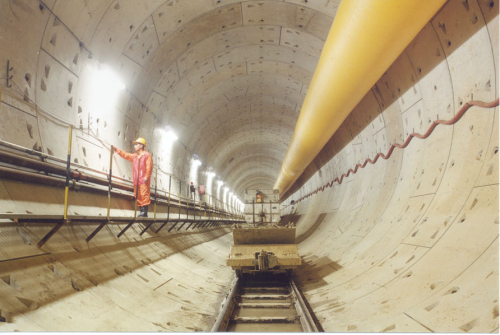
Just four decades ago, Singapore's water supplies were inadequate and precarious. With no lakes or aquifers, and with limited land for water catchment, it had no choice but to import raw water from neighbouring Malaysia.
As Singapore raced to urbanise in the 1960s and 1970s, the result was water shortages, with the added problems of flooding and river pollution. Today, however, it is a very different story: the island has sustainable and diversified supplies of water, which the national water agency, Singapore's Public Utility Board (PUB), has secured in a strategy called the ‘Four National Taps’.
The ‘Four National Taps’ refer to water from four sources: local catchment areas, imported water, reclaimed water and desalinated water. The water reclamation programme, which uses advanced membrane technologies involving micro-filtration, reverse osmosis and ultraviolet disinfection, to recycle treated used water, has been particularly successful.
Having a comprehensive sewage system, Singapore is able to collect all its used water and turn it into a high-grade brand of reclaimed water it calls NEWater, which surpasses World Health Organisation standards for drinking water.
Most of it is used for industrial and air-cooling purposes, but a small percentage is mixed with reservoir water before being treated for the drinking water supply. The country's four NEWater plants already meet 15% of its water needs. With a fifth plant in the pipeline, the plan is to raise this to 30% by 2010.
The other technological triumph has been with desalination.After extensive research and feasibility studies, Singapore opened its first desalinationplant two years ago. A new mega project is currently underway for a tidal barrier to be built across Singapore's marina channel, to prevent flooding in low-lying areas and create a freshwater reservoir in the heart of the city (World Pumps March 2008).
In addition to shoring up the country's water supply and acting as a flood defence, the idea is that the Marina Barrage will act as new lifestyle attraction that creates a greater affinity with the water.
A more sophisticated system of collecting and treating used water will soon replace the current one. The Deep Tunnel Sewerage System will act as a ‘super highway’ for managing used water more efficiently, designed so that gravity alone drives used water through a deep tunnel running from the north to the east of the island.
These experiments in water technology and management have proven so successful that what was once a strategic vulnerability is now being recognised as a potential money-spinner.
In 2006, the Singapore government earmarked the water sector as a growth industry, and invested S$330 million in water R&D over the next five years. So far, it has successfully attracted investments from major water players such as GE Water, Siemens Water Technologies, CH2MHill, Black & Veatch and Delft Hydraulics.
PQ: In 2006, the Singapore government earmarked the water sector as a growth industry, and invested S$330 million in water R&D over the next five years.
Singapore's integrated water management approach is not focused solely on engineering challenges and new technology, however. There has been a concerted effort to simultaneously engage the people of Singapore as stakeholders in the island's water resources on both a micro and macro level.
Programmes to encourage water conservation, for example, has managed to reduce water consumption in Singapore households from 165 l a day per capita in 2003, to 158 l now. Organizations and individuals are encouraged to adopt the island's water bodies and become Friends of Water. Outstanding Friends of Water are then acknowledged in an annual award known as the Watermark.
The success of these programmes has contributed to the country's reservoirs becoming a haven for water activities such as kayaking and wakeboarding. Yet another initiative, known as the Active, Beautiful, Clean Waters programme, hopes to bring people even closer to the water by transforming drains, canals and reservoirs into streams, rivers and lakes. Singapore's goal is therefore not just to make full use of this precious resource, but to have each drop fully appreciated as well.
Singapore's PUB ‘Four National Taps’ strategy has led it to becoming an internationally-acclaimed model of successful water management. In August 2007, it won the Stockholm Industry Water Award, and in 2006, was named Water Agency of the Year at the Global Water Awards.






